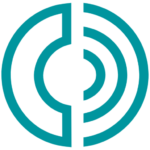The Medicare Annual Enrollment Period (AEP) is an important time of year for call centers in the health insurance industry.
This period, spanning from October 15 to December 7, gives Medicare recipients the opportunity to make significant adjustments to their healthcare coverage.
In this comprehensive guide, we’ll provide you with the knowledge and tools you need to sell Medicare effectively and navigate the enrollment period with ease.
What is the Medicare Annual Enrollment Period (AEP)?
The Annual Enrollment Period (AEP) is a time of year when Medicare beneficiaries are able to update their healthcare coverage and make significant changes.
During this period, which runs from October 15 to December 7, more than 65 million Medicare recipients have the ability to switch from their original Medicare plans (Part A and Part B) to Medicare Advantage plans (Part C).
They can also transition between various Medicare Advantage plans, switch Prescription Drug plans (Part D), or even enroll in a new Prescription Drug plan if they were not previously enrolled.
The AEP represents a high-stakes period for Medicare sales when potential clients are actively seeking guidance and making important coverage decisions.
A Brief History of Medicare and Annual Enrollment
Understanding the history of Medicare and private plans can provide you with better context to assist potential clients in making informed decisions.
When Medicare Started
Medicare originally started in 1966, and had always incorporated private plans into its framework.
Initially, health maintenance organizations (HMOs) partnered with Medicare to help enable retirees with employer-sponsored insurance to maintain their existing patient-provider relationships.
Over time, payment methods evolved, transitioning from reasonable-cost arrangements to risk-based contracts.
Introduction of Medicare+Choice Program
The Balanced Budget Act of 1997 (BBA) marked a significant milestone by introducing Medicare Part C, initially known as the Medicare+Choice program.
The BBA changed payment rates and introduced risk-adjustment measures based on health status. It also established an annual enrollment period.
Moreover, the BBA authorized various private plan options, including preferred provider organizations (PPOs), provider-sponsored organizations, private fee-for-service plans, and high deductible health plans with medical savings accounts.
Renamed to Medicare Advantage
In 2003, the Medicare Prescription Drug, Improvement, and Modernization Act (MMA) transformed the landscape by renaming Medicare+Choice to Medicare Advantage, raising payment rates, and introducing the bidding system for estimated costs.
By having a sense of the regulatory framework you operate in, and the range of choices available to your leads, you can go beyond what’s in your sales script and build trust with your clients.
Medicare Terms to Know
To navigate annual enrollment effectively, there are common keywords you need to be aware of. Knowing these terms will help you effectively communicate with your leads and prepare for potential questions or objections.
Medicare Advantage (Part C)
Medicare Advantage (Part C) is a type of Medicare plan offered by private insurance companies that provides the same coverage as Original Medicare (Part A and Part B), along with additional benefits such as prescription drug coverage, dental, vision, and wellness programs.
Prescription Drug Plan (Part D)
Prescription Drug Plan (Part D) is a standalone plan that offers coverage for prescription drugs. Beneficiaries can enroll in Part D plans to complement their Original Medicare or Medicare Advantage coverage.
Medigap (Medicare Supplement Insurance)
Medigap are policies sold by private insurance companies to fill the “gaps” in Original Medicare coverage. These policies can help with out-of-pocket costs like copayments, coinsurance, and deductibles.
CMS (Centers for Medicare & Medicaid Services)
The CMS is a federal agency that administers the nation’s major healthcare programs, including Medicare, Medicaid, and the Children’s Health Insurance Program (CHIP).
Out-of-Pocket Maximum/Limit
Out-of-pocket maximum is the maximum amount a beneficiary is required to pay for covered healthcare services in a plan year. Once this limit is reached, the plan typically covers 100% of the costs for covered services.
Formulary
Formulary is a list of prescription drugs covered by a Part D prescription drug plan or a Medicare Advantage plan with prescription drug coverage. Understanding a plan’s formulary is crucial for beneficiaries to ensure their medications are covered.
Medicare AEP Pros and Cons for Sales
While the Medicare Annual Enrollment Period (AEP) offers plenty of advantages, it also presents some challenges and considerations for call centers to consider.
| Pros | Cons |
| Increased Sales Opportunities:The AEP results in a surge of Medicare beneficiaries actively seeking new plans or making adjustments to their existing coverage. This creates a huge sales opportunity for call centers. | Increased Competition:Plenty of insurance providers and sales professionals increase outreach during AEP, resulting in more competition for clients. Standing out in a crowded market can become challenging. |
| Client Engagement:The AEP provides a structured timeframe when insurance agents can engage with clients, offer guidance, and assist them in making informed decisions about their healthcare coverage. This focused engagement can help build stronger client relationships. | Time Sensitivity:The limited duration of Annual Enrollment means that call centers must work efficiently to capture leads, provide assistance, and complete sales within this window. Time management and agent efficiency is critical. |
| Varied Plan Options:Beneficiaries have access to a wide range of Medicare Advantage and Prescription Drug plans during the AEP, allowing them to explore options that better align with their needs and preferences. | Client Confusion:The abundance of plan options can sometimes overwhelm beneficiaries, leading to confusion and hesitation in making decisions. Agents must be prepared to address these concerns and simplify the decision-making process. |
Successful Annual Enrollment Sales Strategies
To navigate the Annual Enrollment Period successfully, it can be beneficial to learn from real-life examples of strategies that have boosted Medicare sales. Here are some effective approaches.
Early Preparation
Launching AEP preparations well in advance allows call centers to streamline their operations. This includes training agents, updating databases, and ensuring all necessary resources are in place before the Annual Enrollment starts.
Early preparation minimizes last-minute stress and ensures a smooth start to the enrollment period.
Segmented Marketing
Tailoring marketing efforts based on client demographics and preferences is a key strategy. By segmenting your lead lists, you can deliver personalized messaging and offers that resonate with your clients.
Personalization can help boost conversion rates and maintain higher customer satisfaction.
Educational Webinars
Hosting educational webinars during the AEP can provide immense value to potential enrollees.
Consider hosting webinars that cover topics such as understanding Medicare plan options, navigating the enrollment process, and maximizing plan benefits.
Offering informative content to your clients helps position your business as a trusted guide.
Follow-Up and Support
Remember, Annual Enrollment success doesn’t end with the initial enrollment. Call centers that prioritize ongoing support, including post-enrollment follow-ups and assistance with claims and inquiries, build stronger client relationships.
Satisfied clients are more likely to refer other people to you and remain loyal in subsequent years. With people being 90% more likely to trust and buy from a brand recommended by a friend, this is a serious sales opportunity.
Technology Integration
Leveraging advanced technologies, such as predictive dialers and customer relationship management (CRM) systems, can significantly enhance AEP efficiency.
Tools like Readymode™ can help automate outreach, streamline data management, and enable agents to focus on meaningful client interactions.
Compliance Adherence
Strict adherence to regulatory guidelines is non-negotiable during the Annual Enrollment Period.
To avoid penalties and maintain your call center’s reputation, you must ensure that all marketing and sales activities follow Centers for Medicare & Medicaid Services (CMS) regulations.
In addition to CMS compliance, call centers must also comply with DNC and TCPA rules, along with state-specific calling restrictions (like these in Maryland).
The right call center software will have many of these compliance features built-in.
8 Tips and Reminders for Annual Enrollment Success
Achieving success during the Medicare Annual Enrollment Period (AEP) requires careful planning and execution.
Here are some valuable tips and reminders to help you maximize performance.
Things to Do Before Annual Enrollment
- Training and Skill Enhancement: Invest in ongoing training and skill development for call center agents. Equip them with the knowledge and communication skills needed to assist potential enrollees effectively.
- Comprehensive Medicare Product Knowledge: Agents should have a deep understanding of the Medicare plans they’re offering, including any updates or changes for the upcoming year. Clients rely on this expertise to make informed decisions.
- Embrace Technology: Leverage technology solutions, such as CRM systems and predictive dialers, to streamline processes, increase efficiency, and enhance the client experience.
- Strategic Outreach: Develop outreach initiatives for existing clients who may be considering plan changes. Being familiar with your business can lead to higher retention rates and referrals.
Monitor During the AEP Campaign
- Clear Communication: Ensure that all client interactions are clear, transparent, and focused on meeting the client’s needs. Avoid jargon and provide information in a way that’s easy to understand.
- Document Your Compliance: Maintain detailed records of all interactions, ensuring compliance with CMS regulations. These documents serve as crucial safeguards in case of audits or client disputes.
- Feedback and Improvement: Collect feedback from clients and agents throughout the enrollment period. Use this input to identify areas for improvement and refine your strategies for future enrollments.
- Use a Client-Centric Approach: Always prioritize the client’s best interests. While sales are important, providing tailored solutions that genuinely benefit your clients builds trust and fosters long-term relationships.
Analyzing AEP Results: Key Metrics
After the dust settles on the Medicare Annual Enrollment Period (AEP), it’s essential to analyze your results.
This evaluation will provide valuable insights on ways to improve future enrollment period strategies. Here’s a breakdown of what to consider during your analysis.
Internal Metrics
- Conversion Rates: Calculate the percentage of potential enrollees who converted into clients and analyze which strategies and agent approaches yielded the highest conversion rates.
- Competitive Analysis: Research the strategies and approaches used by your competitors. Identify opportunities where your call center can stand out and excel.
- Compliance Audit: Conduct an internal compliance audit to ensure that all activities complied with CMS regulations, DNC and TCPA rules and state-specific restrictions. Identify any compliance-related issues and take corrective action if necessary.
- Technology Performance: Evaluate the effectiveness of technology solutions you used, such as CRM systems and predictive dialers. Did your calls get through? Were your agents able to access important customer data during their calls?
- Sales Team Feedback: If you’re a call center owner or manager, gather feedback from your agents regarding their experiences and challenges. Use their insights to refine agent training and support.
Client-Facing Metrics
- Client Retention: Assess the rate at which existing clients renewed their plans or made changes during this period. See if you can identify any factors that contributed to high retention or potential areas for improvement.
- Feedback Analysis: Review client feedback collected during your campaign, both positive and negative. Use this feedback to refine client-centric approaches and address any concerns.
- Client Satisfaction: Assess client satisfaction through surveys or follow-up interactions. Identify areas where clients expressed high satisfaction and areas where improvement is needed.
Summary
Navigating the Medicare Annual Enrollment Period (AEP) requires a comprehensive understanding of the industry, effective strategies, and a client-centric approach.
As you prepare for this year’s enrollment period, remember that the key to success lies in thorough preparation, clear communication, and a commitment to compliance.
By implementing the tips and strategies outlined in this guide, you can confidently lead your call center to Medicare sales success.
Readymode
About Readymode®
Readymode is a cloud-based, outbound customer engagement platform for sales teams. Our all-in-one platform empowers businesses to engage smarter, connect more, and grow their revenue. Along with an industry-leading predictive dialer, our outbound calling solutions include advanced features like fully integrated CRM, built-in compliance tools, and real-time reporting and analytics. Readymode is at the core of the conversation; we’re designed for businesses that want to maximize productivity and scale affordably.







